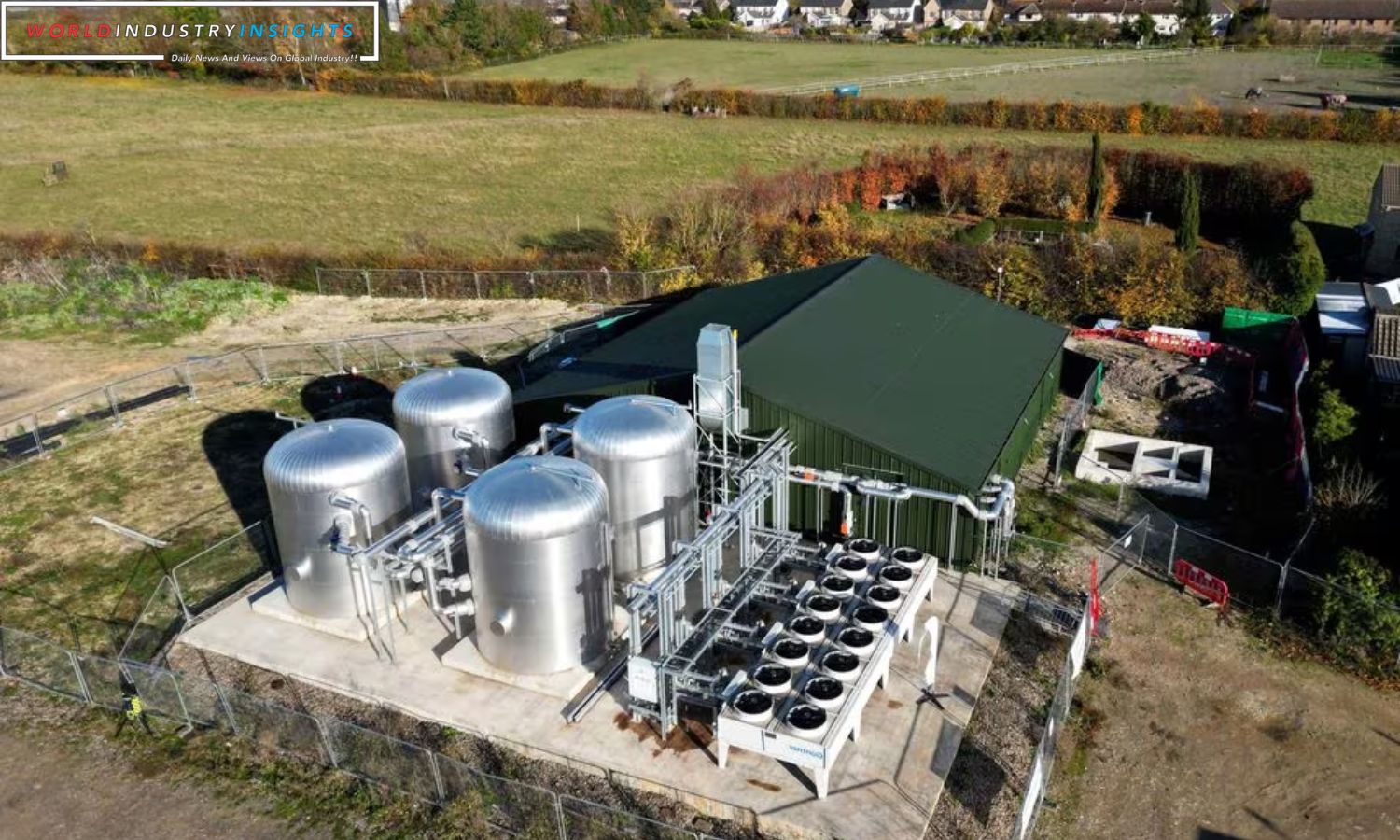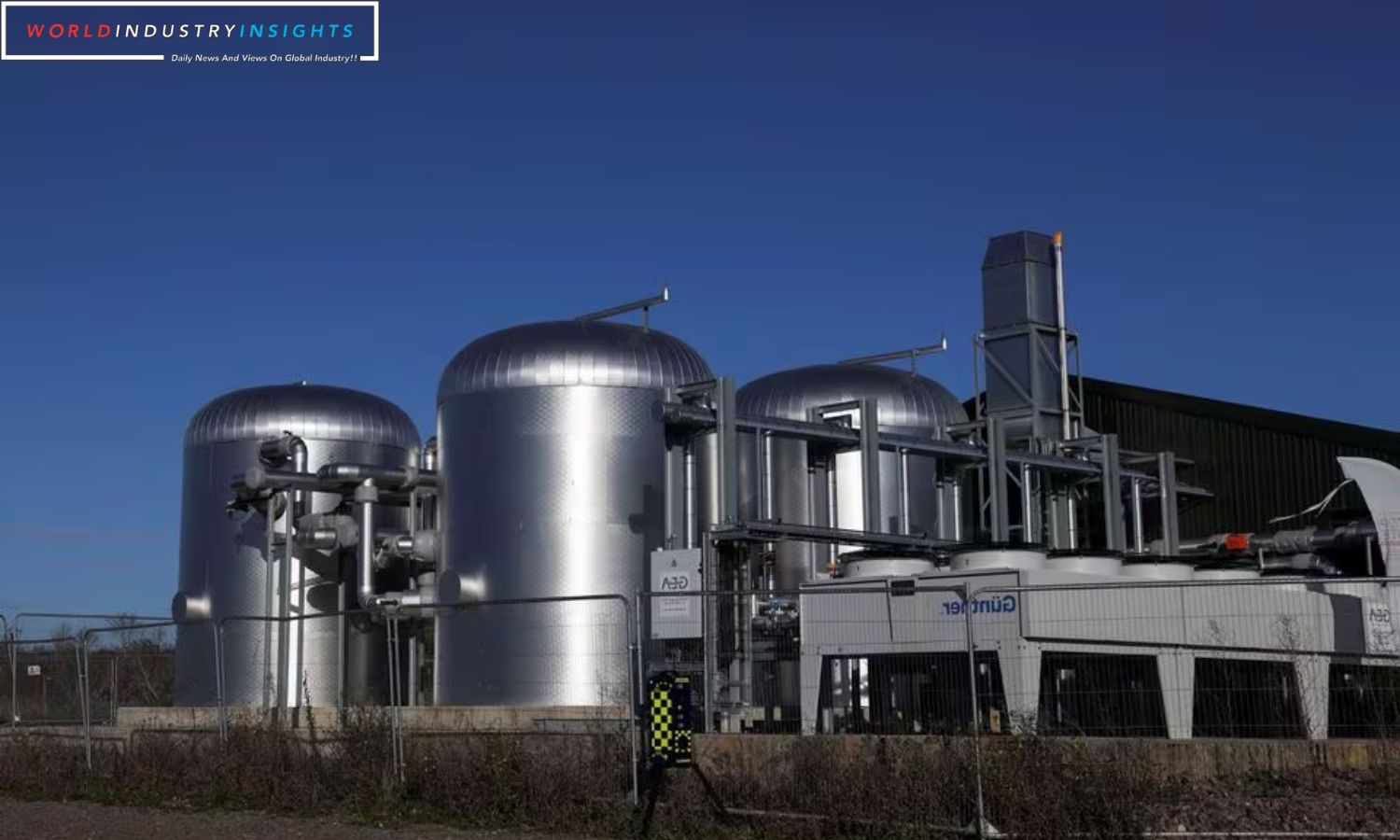Rural England Heat Revolution: In the tranquil fields of eastern England, a groundbreaking project is making waves – a vast heat pump silently generating enough warmth to transform how a historic village powers its homes. This pilot initiative not only aims to boost renewable energy use but could also pave the way for the UK to align with its net-zero targets, where it currently lags.
Resembling an expansive agricultural site with gleaming silver water vats, this innovative heat pump produces water at a temperature sufficient to seamlessly integrate with existing domestic systems. What sets it apart is its ability to eliminate the need for costly home retrofits, thanks to a 60-year funding scheme that removes upfront costs, a pivotal move for households navigating tight finances.
This network, a pioneering venture in rural Britain, not only showcases a pathway for the UK to catch up with Europe in adopting heat pumps but also addresses the broader challenge of funding the extensive net-zero transition.
“The truth is getting to net zero is going to cost money,” emphasizes Miles Messenger from Bouygues Energies & Services, a key player in designing and building the Swaffham Prior heat network near Cambridge. “What this project brings in particular is a demonstration of how to do everything in one go for a village community.”
The urgency to meet net-zero targets looms large, with Britain falling short, according to climate advisers. To achieve its 2050 goal, the country must decarbonize 28 million homes, a daunting task given the majority relies on piped natural gas, significantly cheaper than electricity used by heat pumps.
Also Read: Harmony in Hydrogen: Japan and South Korea Unite for Global Energy Revolution
The Swaffham Prior initiative, located in a village where oil traditionally heated a majority of homes, conducted trials to drive uptake. The findings were illuminating – a large network proved more efficient than individual heat pumps. Moreover, a community-centric approach and the absence of upfront payments increased resident participation.
The 12 million pound ($15 million) cost was covered by a 3 million pound government grant and a loan secured by the local council, repayable over 60 years via household bills. While not a one-size-fits-all solution, this model demonstrates how the financial burden of the energy transition can be more manageable.
Residents, recognizing the gravity of climate change, are willing to embrace the shift. Lorna Dupre at Cambridgeshire County Council notes that as the crisis escalates, residents’ demands for climate action grow. The project, with its index-linked bills, not only aligns or undercuts heating oil costs but also sets a precedent for making energy transition costs more palatable.
The heat pump industry closely watches this rural heat network, acknowledging that high initial costs can deter individuals. The sector believes that tax and levy adjustments are critical to making heat pumps more cost-effective, particularly in well-insulated homes.
While challenges persist, including the dominance of natural gas, the UK government has taken steps to encourage heat pump adoption, offering increased grants. These funding boosts aim to level the playing field, making heat pump installation comparable to traditional gas boilers.
Bouygues Energies & Services‘ Miles Messenger asserts that heat pumps are the optimal way to achieve net-zero, emphasizing the need for a national financing plan. Small community pilot projects, like the one in Swaffham Prior, are harbingers of change, embodying the delicate dance between financial feasibility and environmental responsibility in the journey toward a sustainable future.


